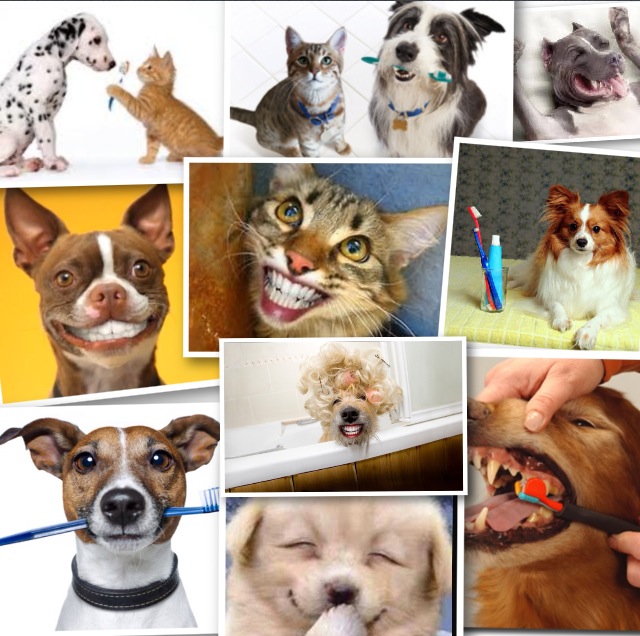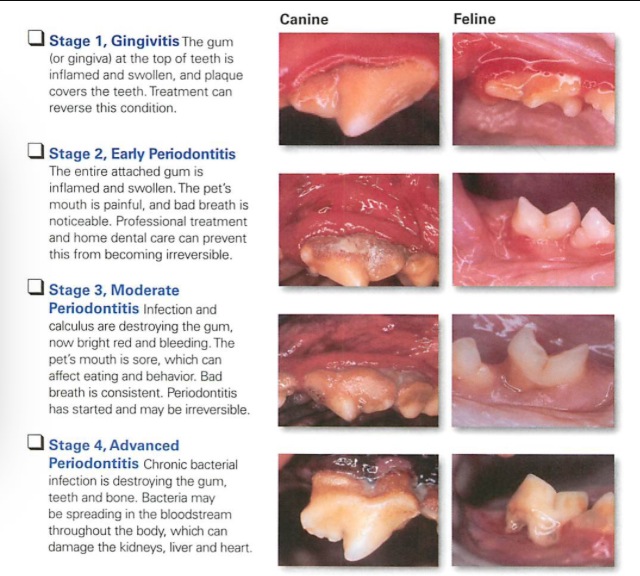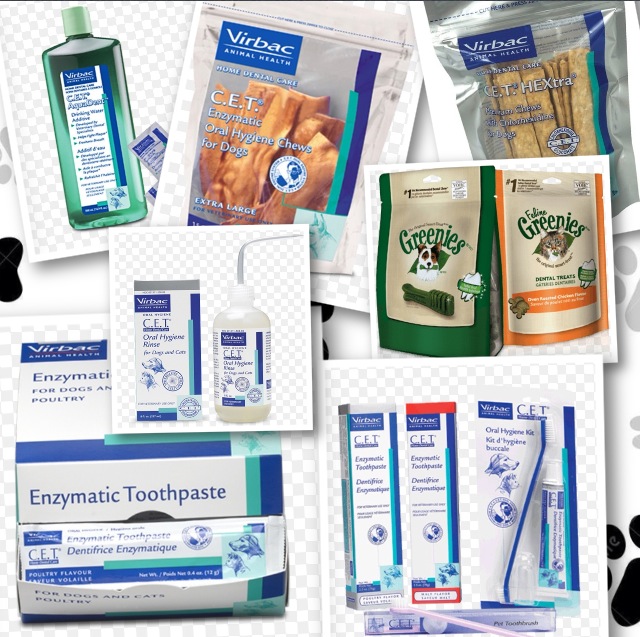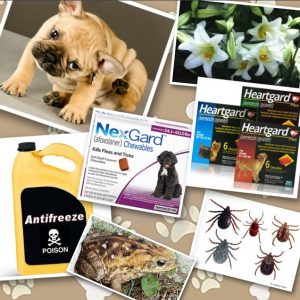
The Most Overlooked Pet Problem – Pet Periodontal Disease!
Hi everyone! I hope everyone is having a great week. I am recovering from just recently having all 4 wisdom teeth removed…fun times!
As I was sitting in the exam room, in a drug induced blur waiting for the dentist to torture me, I was reading a poster hung on the dentist’s wall. The poster was an image of the human body and arrows that pointed to different body systems (the joints, kidneys, the heart, etc) and then listed the diseases that can result from periodontal disease in humans. Diseases that are listed include increase risk of head and neck cancer, Alzheimer’s disease, increased risk of kidney and pancreatic cancer, diabetes, arthritis, and heart disease, just to name a few. I am very familiar with this poster and not because I am a human doctor, but because periodontal disease in our pets causes the same diseases. THE EXACT SAME DISEASES!

It occurred to me that humans (well most of us) brush, floss, and rinse everyday (ok maybe not the flossing part everyday), schedule bi-yearly dental cleaning appointments, and try to be diligent about our dental health. Most of our pets, on the other hand, never brush their teeth, certainly do not floss and rinse, and if I am lucky I see them once a year for a professional dental cleaning. I probably see 20 to 30 pets a day for appointments for various reasons including upset belly, wellness vaccinations, itching skin, etc. I am going to be conservative and say that 85% of all my pets I see have periodontal disease…85% PERCENT!
So inspired by my recent trip the dentist, I decided to discuss the importance of dental health in our pets and how it is the most overlooked disease that is causing major health concerns for our pets, and what we can do to improve dental health.
How pet periodontal disease begins
1) Tarter Formation
As food particles, saliva, and bacteria collect on the dental surface, they form a soft plaque. Within 24- 48 hours the plaque begins to solidify into a mineralized tarter. Tarter adheres to the teeth and harbors more bacteria, which may result in gingivitis, an active inflammation of the gums. The large amount of bacteria can become a source of infection for the rest of the body. Each time your pet breathes and swallows, the bacteria are shed into the lungs, heart, kidneys, etc. potentially causing organ disease.
2) Periodontal Disease
Any damage to the tooth’s surrounding gum and supportive bone tissues is considered periodontal disease.
Periodontal Disease- Stage 1 or 2
Mild to moderate gingivitis- an active inflammation of the gums.
Gingival recession- recession of gum causing exposure of the tooth’s root.
Halitosis- bad breath.
These changes are reversible with appropriate treatment.
Periodontal Disease- Stage 3 or 4
Deep tissue adhesions.
Tooth and bone reabsorption.
Painful abscesses.
Teeth may fall out.
These changes are permanent in which the stability between the tooth root and the bone is lost.

Now that everyone is an expert on how periodontal disease starts and progresses, let’s discuss what we can do to improve our pets’ dental health and prevent systemic illness and shorter life spans.
Proper Dental Care and Disease Prevention
1) The single most important measure you can take to prevent periodontal disease and promote dental health in your pet is AT HOME DENTAL CARE. Yep, we need to start brushing our pets teeth. Whenever I see a new puppy, I passionately motivate my clients to start teaching them how to tolerate and even enjoy getting their teeth cleaned. If you have an adult pet, although more challenging, I encourage you to try and start cleaning their teeth using lots of positive reinforcement. There are great YouTube videos on the internet, or you can ask your veterinarian to demonstrate for you in the examination room. The key is to use a soft bristle tooth brush (there are pet specific ones, or you can use a baby soft bristle brush from your local drugstore) and pet formulated toothpaste. It is important to make sure the toothpaste is specific and safe for pets. Pets do not spit out the toothpaste, they swallow it (unless you train them to spit it out and in that case you are my hero and I need to meet you immediately). Follow-up with a proper rinse that is pet safe to finish up the cleaning. We recommend brushing everyday, but if you can do it twice weekly, you are way ahead of the game.
2) Visit your veterinarian for a thorough dental cleaning and examination annually or biannually. Your veterinarian will examine all dental, gingival, and oral surfaces, looking for tooth decay, fractures, gingival pockets, and abnormal growths. I need to stress that even if you are religiously cleaning your pets teeth, it is still so important to get them in at least once a year for a proper teeth cleaning under anesthesia with an ultrasonic scaler and polisher. Just like us, they need a thorough cleaning that removes the plaque and tartar under their gumlines that you cannot get to with a toothbrush. The oral examination is imperative to check for disease and ensure dental health.
I would say my biggest challenge to having my clients schedule a teeth cleaning is the fear of anesthesia. Anesthesia is very safe if the proper precautions, anesthetic agents, and monitoring devices are utilized. Make sure your veterinarian takes all safety precautions ahead of time (blood work, full examination with emphasis on auscultating their heart and lungs). Inquire about the anesthetic agents we use. Today we use the same anesthetics they utilize in human hospitals. Ask your veterinarian how they monitor your pets under anesthesia. We have all our pets monitored by pulse oximetry, ECG leads, and blood pressure and temperatures are taken every 15 minutes. Ask your veterinarian what measures are in place if there is an anesthetic emergency (a crash cart on standby, emergency drugs pulled up). The bottom line is that if anesthesia is deterring you from taking great care of your pets dental health, make yourself comfortable with your veterinarian anesthetic protocols and get reassured. Anesthesia should never be the reason why your pet does not have their teeth examined and cleaned (unless they have a condition that places them as an anesthetic risk). The benefits of disease prevention far outweigh the risks of anesthesia.
I hope this helps inspire all my pets’ parents to take the best care of their pets’ teeth. I know how much my clients and I adore and love their pets. Keeping them healthy and living a long life is top priority. Dental health should absolutely be part their routine health and care and unfortunately poor dental health is the most overlooked cause of disease that I see.
Here are some of my favorite dental products for your pets! I hope this helps!

CET Water Additive, CET Dental Chews, CET Mouth Rinse, CET Toothpaste, CET Toothbrush ,Greenies Pet Chews




